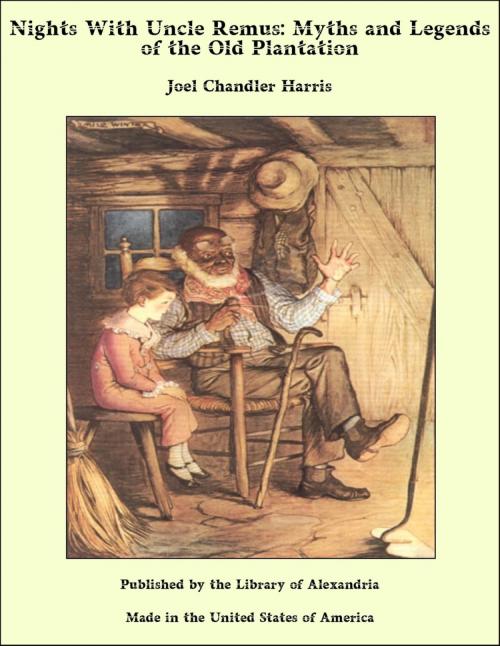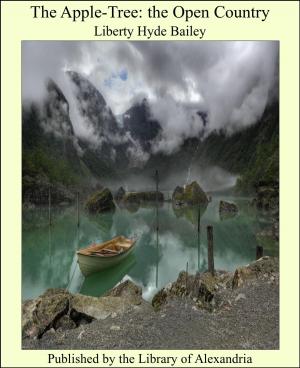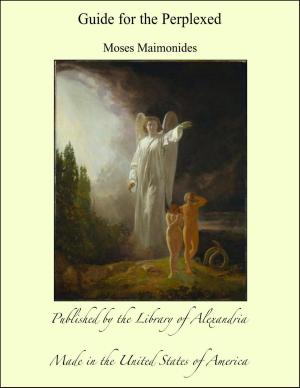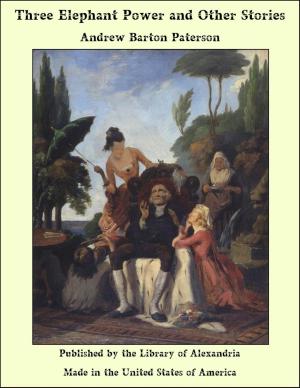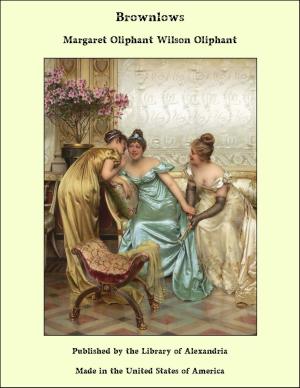Nights With Uncle Remus: Myths and Legends of the Old Plantation
Nonfiction, Religion & Spirituality, New Age, History, Fiction & Literature| Author: | Joel Chandler Harris | ISBN: | 9781465609816 |
| Publisher: | Library of Alexandria | Publication: | March 8, 2015 |
| Imprint: | Language: | English |
| Author: | Joel Chandler Harris |
| ISBN: | 9781465609816 |
| Publisher: | Library of Alexandria |
| Publication: | March 8, 2015 |
| Imprint: | |
| Language: | English |
The volume containing an instalment of thirty-four negro legends, which was given to the public three years ago, was accompanied by an apology for both the matter and the manner. Perhaps such an apology is more necessary now than it was then; but the warm reception given to the book on all sides—by literary critics, as well as by ethnologists and students of folk-lore, in this country and in Europe—has led the author to believe that a volume embodying everything, or nearly everything, of importance in the oral literature of the negroes of the Southern States, would be as heartily welcomed. The thirty-four legends in the first volume were merely selections from the large body of plantation folk-lore familiar to the author from his childhood, and these selections were made less with an eye to their ethnological importance than with a view to presenting certain quaint and curious race characteristics, of which the world at large had had either vague or greatly exaggerated notions. The first book, therefore, must be the excuse and apology for the present volume. Indeed, the first book made the second a necessity; for, immediately upon its appearance, letters and correspondence began to pour in upon the author from all parts of the South. Much of this correspondence was very valuable, for it embodied legends that had escaped the author's memory, and contained hints and suggestions that led to some very interesting discoveries. The result is, that the present volume is about as complete as it could be made under the circumstances, though there is no doubt of the existence of legends and myths, especially upon the rice plantations, and Sea Islands of the Georgia and Carolina seacoast, which, owing to the difficulties that stand in the way of those who attempt to gather them, are not included in this collection. It is safe to say, however, that the best and most characteristic of the legends current on the rice plantations and Sea Islands, are also current on the cotton plantations. Indeed, this has been abundantly verified in the correspondence of those who kindly consented to aid the author in his efforts to secure stories told by the negroes on the seacoast. The great majority of legends and stories collected and forwarded by these generous collaborators had already been collected among the negroes on the cotton plantations and uplands of Georgia and other Southern States. This will account for the comparatively meagre contribution which Daddy Jack, the old African of the rice plantations, makes towards the entertainment of the little boy.
The volume containing an instalment of thirty-four negro legends, which was given to the public three years ago, was accompanied by an apology for both the matter and the manner. Perhaps such an apology is more necessary now than it was then; but the warm reception given to the book on all sides—by literary critics, as well as by ethnologists and students of folk-lore, in this country and in Europe—has led the author to believe that a volume embodying everything, or nearly everything, of importance in the oral literature of the negroes of the Southern States, would be as heartily welcomed. The thirty-four legends in the first volume were merely selections from the large body of plantation folk-lore familiar to the author from his childhood, and these selections were made less with an eye to their ethnological importance than with a view to presenting certain quaint and curious race characteristics, of which the world at large had had either vague or greatly exaggerated notions. The first book, therefore, must be the excuse and apology for the present volume. Indeed, the first book made the second a necessity; for, immediately upon its appearance, letters and correspondence began to pour in upon the author from all parts of the South. Much of this correspondence was very valuable, for it embodied legends that had escaped the author's memory, and contained hints and suggestions that led to some very interesting discoveries. The result is, that the present volume is about as complete as it could be made under the circumstances, though there is no doubt of the existence of legends and myths, especially upon the rice plantations, and Sea Islands of the Georgia and Carolina seacoast, which, owing to the difficulties that stand in the way of those who attempt to gather them, are not included in this collection. It is safe to say, however, that the best and most characteristic of the legends current on the rice plantations and Sea Islands, are also current on the cotton plantations. Indeed, this has been abundantly verified in the correspondence of those who kindly consented to aid the author in his efforts to secure stories told by the negroes on the seacoast. The great majority of legends and stories collected and forwarded by these generous collaborators had already been collected among the negroes on the cotton plantations and uplands of Georgia and other Southern States. This will account for the comparatively meagre contribution which Daddy Jack, the old African of the rice plantations, makes towards the entertainment of the little boy.
